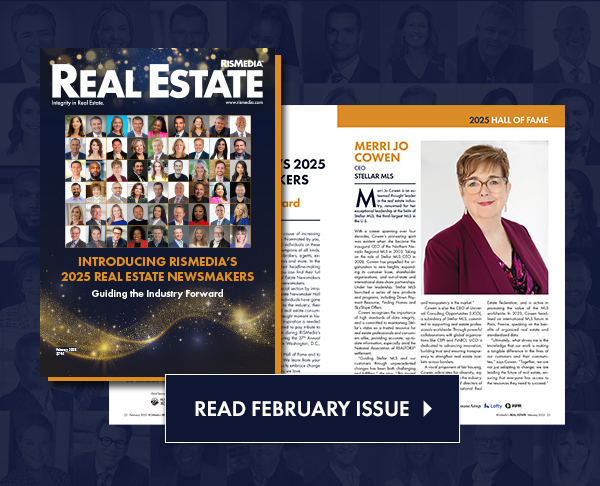 In the late 1990s, the dotcom boom was a watershed moment for luxury real estate. It had an impact that extended well beyond those making millions of dollars in the tech industry. The acquired wealth and accompanying optimism created a new breed of affluent consumer and a renewed demand for luxury real estate, resulting in a surge in prices in the ultra-high-end. While the market has had multiple swings since then, the fascination with the luxury real estate space has persisted.
In the late 1990s, the dotcom boom was a watershed moment for luxury real estate. It had an impact that extended well beyond those making millions of dollars in the tech industry. The acquired wealth and accompanying optimism created a new breed of affluent consumer and a renewed demand for luxury real estate, resulting in a surge in prices in the ultra-high-end. While the market has had multiple swings since then, the fascination with the luxury real estate space has persisted.
“In the mid ’90s, luxury apartments revived the market. The values were so enticing that it started to domino the other way, tumbling from the higher-end apartments down to the smaller ones,” says Diane Ramirez, CEO of Halstead Property in New York City, a member of Luxury Portfolio International®.
Prior to this time, it was rare to see a home over $10 million, even in the most exclusive areas, but as we moved into the early 2000s, prices that once seemed astronomical became commonplace.
Suddenly, there was a whole new luxury consumer—a new generation of affluence—and the way they approached life, including their pursuit of real estate, has had a lasting impact. Unlike the traditional affluent individual who had inherited his or her wealth, the “new luxury” consumer was self-made, growing up with middle-class values, a strong sense of family and a desire to learn about luxury products and services in order to make intelligent decisions.
With this changing landscape, the seeds were planted for a new kind of real estate marketing that responded to the needs of this savvy consumer, empowered with technology and increasingly globally-minded. Even before the Internet became a pervasive part of home search, consumers wanted more control of the process. They were more demanding than ever and expected a high level of expertise and performance from their real estate brokers.
Joining Forces
To meet these needs, shifts began to occur in the luxury marketing space. Leading Real Estate Companies of the World® already included a majority of the luxury firms throughout the U.S. with a smattering of global affiliates. On the luxury front, many of these companies had marketing affiliations with the Sotheby’s auction house. But when Sotheby’s licensed its brand to Realogy, the real estate franchisor behind Century 21, ERA, Coldwell Banker, and Better Homes and Gardens Real Estate, most of the independently-branded and -operated companies rejected the opportunity to transition from their former marketing affiliation to the Sotheby’s franchise business model.
These firms had dominant luxury marketshare—locally and collectively—but had no common home for a distinctive luxury marketing program. Firms like Houlihan Lawrence in Westchester County, Slifer Smith & Frampton in Vail, Michael Saunders & Company in Sarasota and John Daugherty Real Estate in Houston made a bold move that would dramatically change the way real estate firms engage affluent consumers. Born of the desire to continue to invest in their own brands and control their own destinies, these firms joined forces under their established Leading Real Estate Companies of the World® (LeadingRE) affiliation to create Luxury Portfolio International® in 2005.
Coming Together
The new division of LeadingRE was fortunate to attract Paul Boomsma, who had managed marketing at a Chicagoland Sotheby’s affiliate, to lead the effort. Boomsma’s experience in marketing significant properties, like Chicago’s original Playboy Mansion, made him the ideal executive to bring this vision to reality.
Within months, Boomsma brought over Stephanie Pfeffer Anton, who, after studying marketing and analytics for her master’s degree at Northwestern, had been involved in marketing such high-profile developments as Trump International Hotel and Tower in Chicago.
Boomsma and Pfeffer Anton had actually met several years before over cappuccinos at Starbucks, instantly bonding over Boomsma’s enthusiasm for marketing and Pfeffer Anton’s love of data. They represented the perfect fusion for the new age of luxury, not knowing that the birth of Luxury Portfolio was in their future.
Today, Boomsma has a dual role as both president of Luxury Portfolio and chief operating officer of LeadingRE, while Pfeffer Anton is responsible for Luxury Portfolio operations as its executive vice president.
“We could not have found two people better suited to lead this bold initiative than Paul and Stephanie,” says LeadingRE President/CEO Pam O’Connor. “They have developed an amazing team and have launched and sustained a substantive program that filled a void in the luxury marketing space, which had traditionally relied solely on brand with little program content and market intelligence.”
Unique from the Start
From the beginning, the Luxury Portfolio team was clear that they wanted a program that was about more than just a name. One of the differentiators was a focus on the luxury consumer who seeks a distinctive experience, values data and embraces technology. They sought a tangible approach to strategically market and expose each individual property to a targeted audience, rather than just promote a legacy brand.
Everything Luxury Portfolio does is in support of its mission, and this has been the case throughout its history: give member listings exposure to the largest high-net-worth audience beyond their marketplace, both nationally and globally; build the first website in nine languages and 60 currencies to tap that global audience; offer a program with tangible resources, including trackable advertising, listing exposure analytics, global events and customized agent marketing at the best possible value; selectively attract and leverage the talent of the most respected, competent, connected and powerful group of luxury real estate brokers in the industry; and, research and share the latest, most relevant information about today’s luxury consumer.
Success through the Recession
Despite launching at a time when the market was starting to soften, LuxuryPortfolio.com quickly had more listings over $1 million than any other luxury network. Even through the Great Recession and the decline of the housing market, Luxury Portfolio continued to gain traction. When the economy began to stabilize in 2011, Luxury Portfolio was in a prime position to capitalize on the opportunities the market presented.












